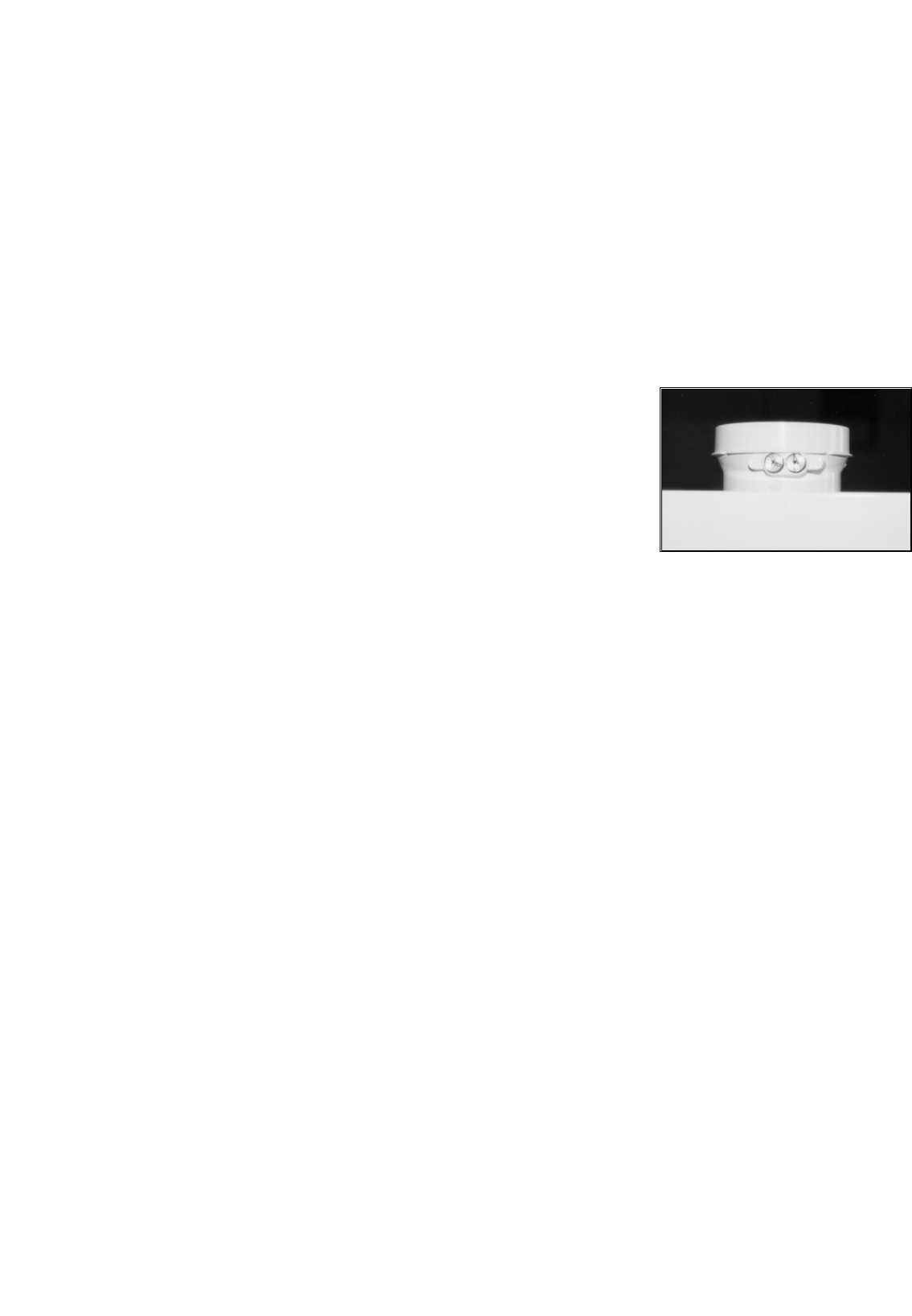
19
275
The draining of the heating system must be carried out as follows:
- Turn off the boiler and the bipolar switch;
- Loosen the automatic air release valve (27);
- Open the system's discharge valve (18) and gather the water
that comes out in a container;
- Empty out from the lowest points of the system (where
provided).
If the system is to be left active in areas where the room temperature
may go below 0°C during winter, it is recommended that anti-freeze
liquid be added to the water in the heating system in order to avoid
the need for repeated draining.
Draining the domestic hot water system
Every time that there is a danger of freezing, the domestic hot water
system must be drained as follows:
- close the water mains stop-cock;
- open all the hot and cold water outlets;
- empty out from the lowest points (where provided).
3.9. C
OMBUSTION ANALYSIS
3.5. D
RAINING
There follows a description of the safety functions that most influence
the behaviour of the boiler.
1. FLOW SWITCH. At the beginning of every ignition sequence, the
P.C.B. checks the operation of the main circuit flow switch.
Initially, the pump is off and the flow switch must be open (not
giving consent); if this does not occur within the space of a
minute, the system carries out a shutdown. When the flow switch
is open, the pump is turned on and within one minute the flow
switch must close; if it does not do so, the monitoring
mechanism shuts down the boiler (with the pump off).
During normal operation, the flow switch must remain closed; if it
opens for over two seconds, the boiler shuts down, then the
monitoring mechanism will attempt to turn it back on.
2. F
AN. On ignition, the fan must rotate at the correct speed,
otherwise the boiler will not attempt to turn itself on. During
operation, the fan rotates at the speed set by the control P.C.B.;
if the number of rotations deviates by more than 300 rpm from
this setting, the boiler shuts off.
3. O
VERHEATING. This device shuts down the boiler in the event that
the primary circuit reaches a temperature that exceeds 100°C.
The operation of the overheat monitoring mechanism also
includes the following precautionary measures:
- After every ignition, the system flow temperature or the
flow/return difference must increase by 3°C in 20 seconds. Until
an increase of 3°C is reached, the boiler remains at the ignition
power. If the increase in temperature does not come about, the
boiler shuts down and will not attempt to re-ignite until the flow
temperature is below 50°C. If after three attempts the
temperature does not increase, the boiler shuts down.
- Before the boiler attempts ignition, the system flow/return
temperature difference must be below 20°C. In order for a
successive attempt at ignition to be carried out, the system must
register that once every 2 hours the flow/return temperature
difference is below 5°C.
- If, during operation the return temperature becomes greater than
the flow temperature by more than 5°C, the boiler shuts down
immediately.
4. D
AILY TEST. In order to prevent the shutdown of the components,
the boiler carries out a self-diagnosing test every 24 hours: the
pump turns on for 3 seconds and the diverter valve moves.
5. A
NTI-FROST DEVICE. The boiler is fitted with an anti-frost device
consisting of three separate functions:
- Monitoring of the system flow temperature: if this temperature
goes below 5°C, the pump turns on (heating system circulation).
If the temperature goes below 2°C, the boiler turns on at the
minimum power and remains on until the return temperature is
over 10°C.
- Outdoor sensor installed: the pump turns on if the external
DISPLAY
EE0033
EE5566
EE6666
EE0044
EE0055
EE0088
EE2200
EE2211
EE2222
EE2233
EE6644
EE7744
EE9999
CAUSE
Flow temperature over 100°C while boiler is not in
operation (stand-by)
Heating flow temperature probe in open circuit
Heating flow temperature probe short-circuited
Domestic hot water temperature probe in open circuit
Domestic hot water temperature probe in short circuit
Under floor heating temperature probe in open circuit
Flame detected with gas valve closed
Error in the electrical connection (live and neutral crossed)
Problem with the 50Hz power supply
Flame detection electrode short-circuited
Heating return temperature probe in open circuit
Heating return temperature probe in short circuit
Problem within the electronic system
temperature goes below -3°C, it turns off when the external
temperatures raises above -1°C.
- Continuous operation of the pump: select by means of jumper 4
(see paragraph 3.6.6.).
N
OTE: In all cases, the circulation takes place in the heating system.
The anti-frost device activates only when (with the boiler operating
correctly):
- the system pressure is correct;
- the boiler is electrically powered;
- there is a supply of gas.
6. A
NTI-SCALE DEVICE. When producing domestic hot water, the
burner shuts off whenever the output temperature of the hot
water exceeds 62°C or the flow temperature of the primary
circuit exceeds 72°C. It will not turn on if the temperature of the
primary circuit is greater than 72°C.
The boiler is designed to
allow for easy analysis of
the products of
combustion.
Using the special traps, it
is possible to detect the
temperature of the burnt
gas, the combustion air,
the concentrations of O
2
,
CO
2
, etc.
The maximum heating power test conditions may be optimised by
turning the selector knob “C” to the flue test position.


















